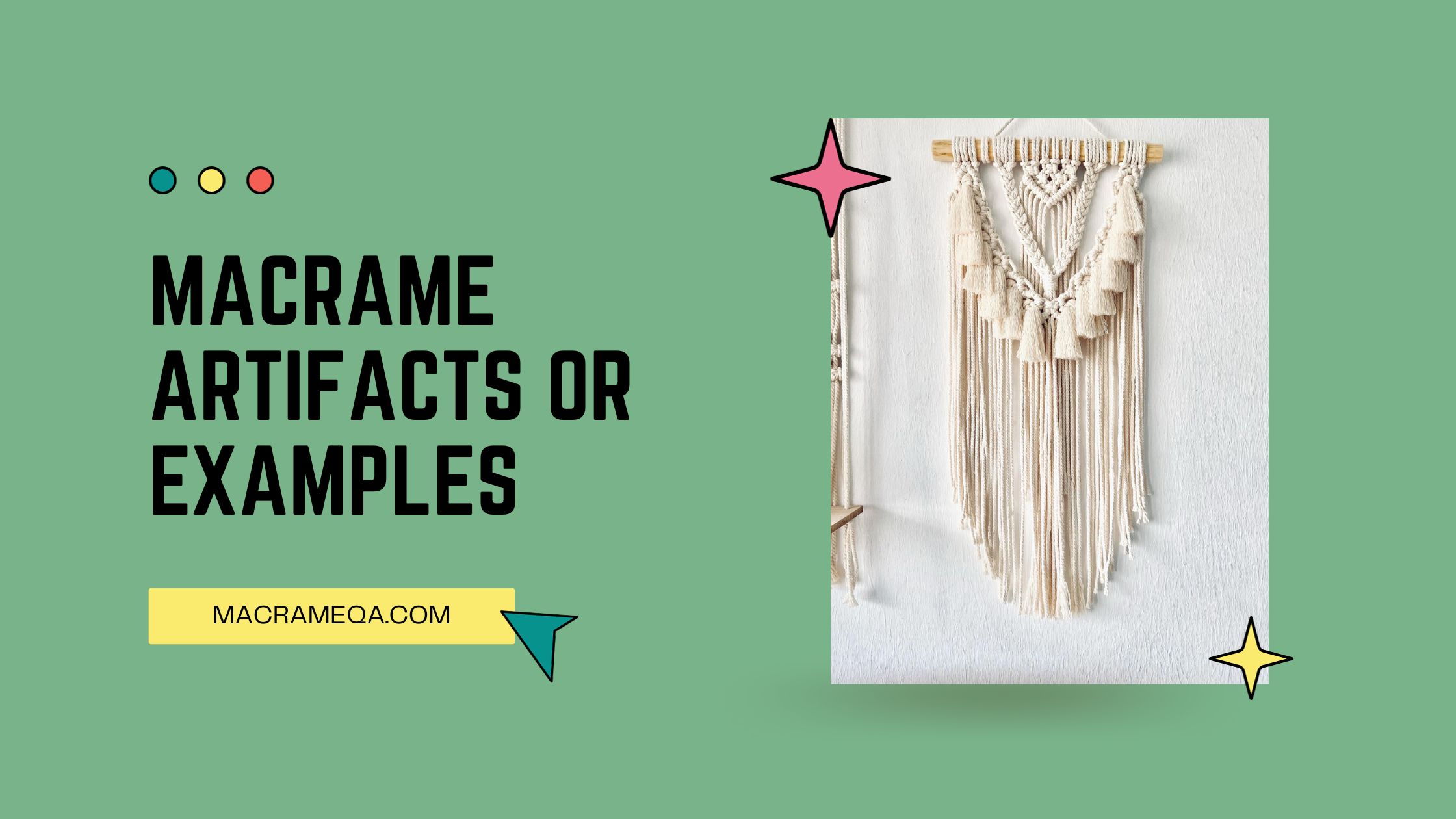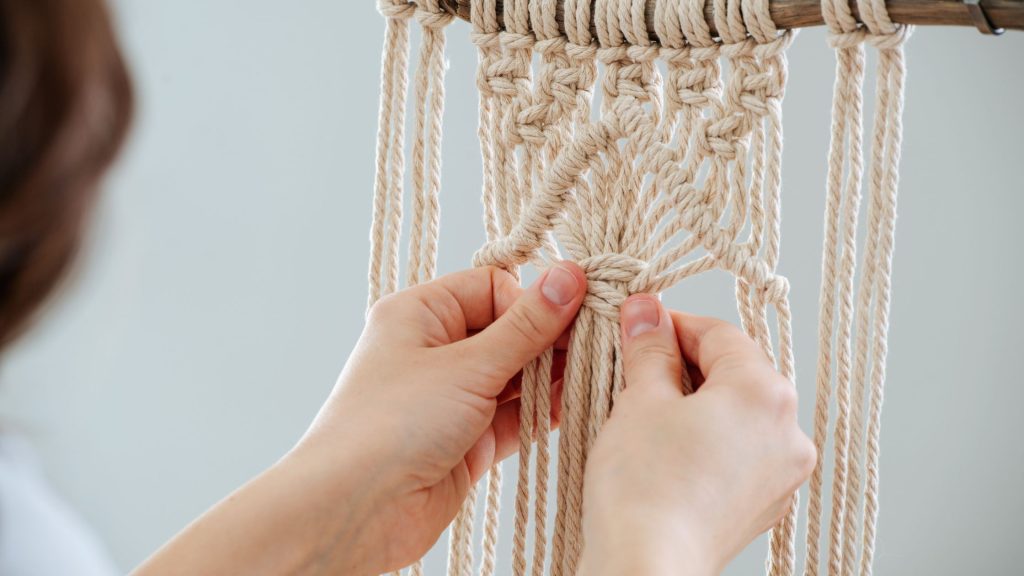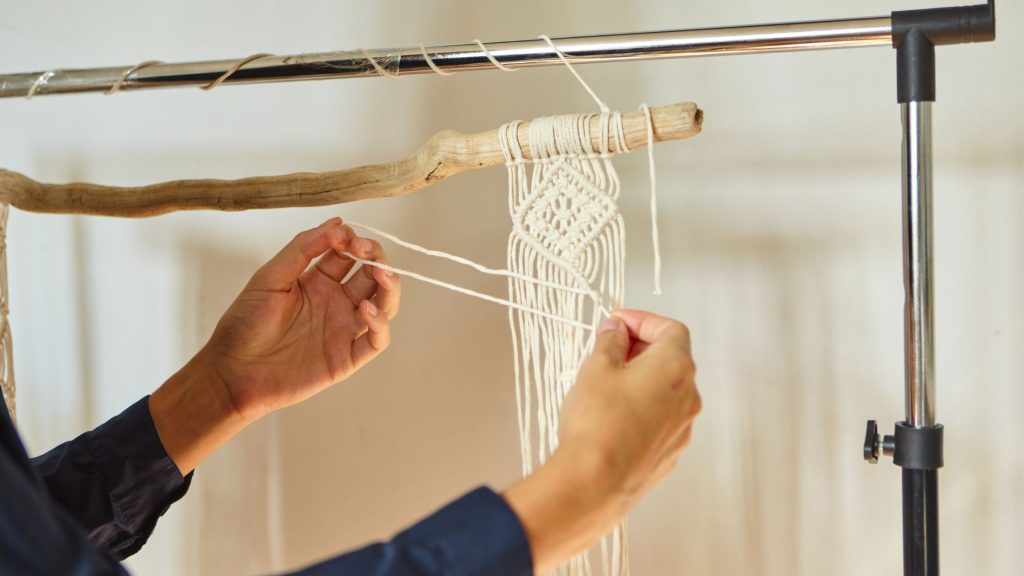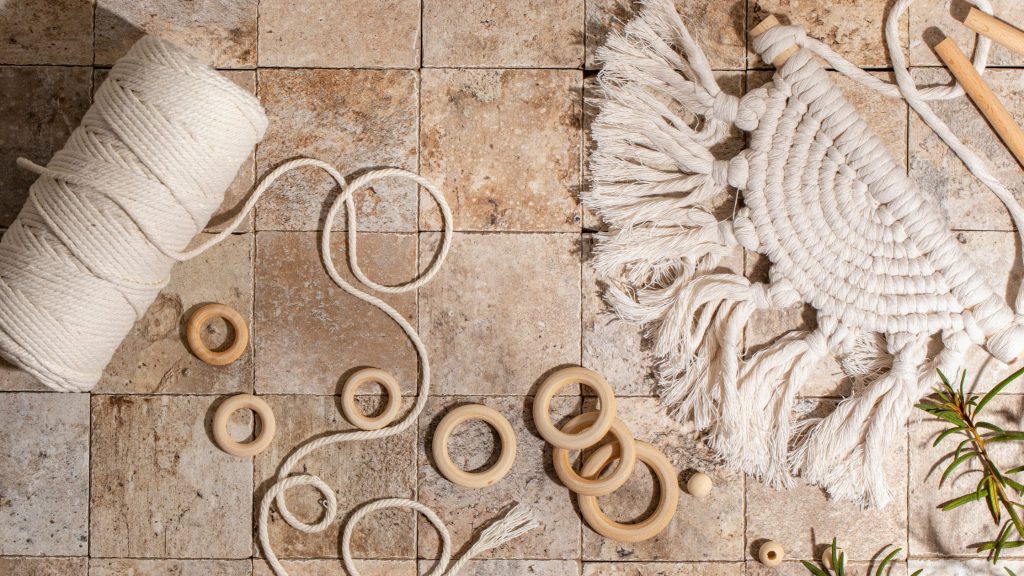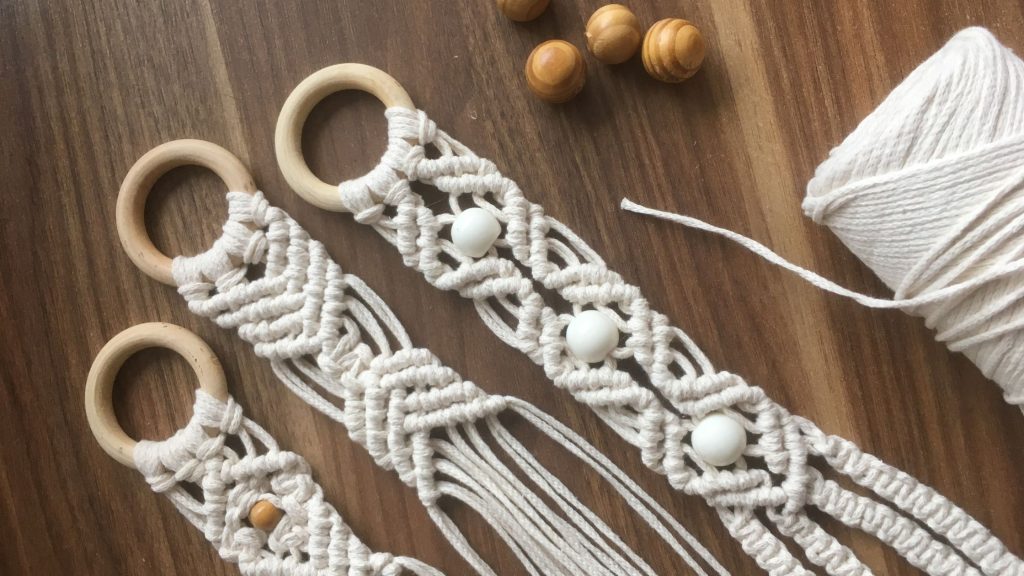Macrame, the art of knotting ropes and cords to create intricate patterns, has gained popularity in recent years. But have you ever wondered if this craft has ancient roots? In this article, we will explore the fascinating world of macrame and explore the question: Are there any ancient macrame artifacts or examples? Join us as we uncover the historical origins of this art form and discover if evidence of ancient macrame can be found in the artifacts left behind by our ancestors.
Ancient Macrame Artifacts
Macrame, the art of knotting cords to create intricate patterns and designs, has a long and fascinating history. Throughout the centuries, various cultures worldwide have embraced this craft and incorporated it into their traditions and daily lives. Ancient macrame artifacts provide us with a glimpse into the skill and creativity of our ancestors, showcasing the beauty and intricacy of this art form. In this article, we will explore three ancient civilizations – Egypt, Peru, and China – and their remarkable macrame artifacts.
Egyptian Macrame Artifacts
Ancient Egypt, known for its rich history and craftsmanship, holds a wealth of macrame artifacts that have stood the test of time. Egyptian macrame pieces often feature intricate patterns and symbolic motifs, reflecting the spirituality and culture of the civilization. These artifacts range from clothing accessories to temple decorations, showcasing the pervasive presence of macrame in everyday life.
Peruvian Macrame Artifacts
In the ancient civilization of Peru, macrame played a significant role in the textile industry. Peruvian artisans mastered the art of knotting cords to create stunning fabrics and garments, distinguished by their vibrant colors and intricate designs. Macrame was not limited to clothing; it adorned the architecture of ancient Peruvian buildings, adding a touch of beauty to the already awe-inspiring structures.
Chinese Macrame Artifacts
China, with its rich cultural heritage and artistic traditions, also boasts an impressive collection of macrame artifacts. The Chinese incorporated macrame into their ceremonial artifacts, such as decorative knots used in religious rituals and traditional ceremonies. These artifacts not only demonstrate the meticulous craftsmanship of the Chinese artisans but also symbolize cultural and spiritual significance.
Ancient Macrame Examples
To truly appreciate the beauty of ancient macrame, it is essential to explore specific examples from each culture. These examples showcase the range of techniques and designs employed by ancient artisans.
Egyptian Macrame Examples
In ancient Egypt, macrame was used to adorn clothing, particularly headpieces and jewelry. The Egyptians believed that macrame accessories protected the wearer from evil spirits and brought good fortune. These examples feature intricate knotting patterns and the use of precious materials like gold and gemstones, highlighting the importance of macrame in Egyptian culture.
Peruvian Macrame Examples
Peru offers a treasure trove of macrame examples, particularly in the realm of textiles. Elaborate macrame designs adorned garments worn by the ancient Peruvians, reflecting their deep-rooted connection to nature and spirituality. These examples showcase the mastery of knotting techniques and the skillful combination of vibrant colors, resulting in visually stunning textiles that tell stories of tradition and heritage.
Chinese Macrame Examples
The Chinese, known for their reverence for tradition and symbolism, used macrame to embellish ceremonial artifacts. Intricate knots and patterns were skillfully incorporated into various objects, such as fans, lanterns, and even wedding accessories. These examples not only exemplify the technical excellence of Chinese artisans but also shed light on the cultural significance attached to macrame in ancient China.
Macrame Artifacts in Egyptian Culture
Macrame played a significant role in ancient Egyptian culture, with its presence felt in various aspects of daily life. From clothing to religious adornments, macrame was a versatile and cherished art form.
Macrame Use in Ancient Egyptian Clothing
Egyptian clothing was not complete without the addition of macrame accessories. Headpieces, necklaces, and belts were meticulously crafted using knotting techniques, resulting in stunning and intricate designs. These macrame accents not only added beauty to garments but also served as a form of personal expression and status symbol within Egyptian society.
Macrame Decorations in Ancient Egyptian Temples
Macrame was not limited to clothing in ancient Egypt; it also played a role in the adornment of temples and sacred spaces. Intricate macrame panels were used as wall hangings and curtains, adding a sense of grandeur and spirituality to these sacred places. These macrame decorations often featured symbolic motifs and patterns, reflecting the religious beliefs and practices of the ancient Egyptians.
Macrame Artifacts in Peruvian Culture
In ancient Peru, macrame was woven deeply into the fabric of daily life, particularly in the realm of textiles and architecture. The Peruvians mastered the art of knotting cords to create intricate patterns and vibrant designs.
Macrame Use in Ancient Peruvian Textiles
Peruvian textiles were known for their exceptional craftsmanship and artistic expression. Macrame played a vital role in the creation of these textiles, with knotting techniques used to embellish garments and fabrics. Cloaks, shirts, and tapestries became canvases for intricate macrame designs, showcasing the skill and creativity of the Peruvian artisans.
Macrame Decorations in Ancient Peruvian Architecture
In addition to textiles, macrame also found its way into the architecture of ancient Peru. Macrame elements adorned buildings and structures, serving as decorative elements and adding a touch of beauty to the already awe-inspiring architecture. From door frames to columns, these macrame decorations added a unique and visually striking dimension to Peruvian architecture.
Macrame Artifacts in Chinese Culture
China, renowned for its rich cultural heritage, showcased the versatility of macrame in various aspects of life, particularly in ceremonial artifacts and palace decorations.
Macrame Use in Ancient Chinese Ceremonial Artifacts
Ancient Chinese ceremonies were highly revered and marked by intricate details and symbolism. Macrame played a crucial role in these ceremonies, with decorative knots used to adorn ceremonial objects. These artifacts ranged from fans to intricate knotting designs incorporated into traditional clothing, highlighting the importance of macrame in Chinese rituals and customs.
Macrame Decorations in Ancient Chinese Palaces
Ancient Chinese palaces were renowned for their grandeur and attention to detail, with macrame decorations playing a significant role in enhancing their beauty. Elaborate macrame panels, wall hangings, and curtains adorned palace interiors, adding a touch of elegance and artistry. These macrame decorations often featured auspicious symbols and motifs, reflecting the cultural and symbolic significance attached to macrame in ancient Chinese palaces.
Similarities and Differences in Ancient Macrame Artifacts
While ancient macrame artifacts spanned across different civilizations, they shared some similarities in techniques while also showcasing distinctive designs that were unique to each culture.
Similar Techniques
One striking similarity among ancient macrame artifacts is the use of knotting techniques. Whether it be Egypt, Peru, or China, artisans in each culture mastered the art of knotting cords to create intricate patterns. The techniques used in macrame were often passed down from generation to generation, preserving the craft’s integrity and ensuring its continuation.
Distinctive Designs
While the techniques may have similarities, the designs of macrame artifacts varied greatly across cultures. Egyptian macrame featured symbolic motifs and intricate patterns inspired by their religion and belief systems. Peruvian macrame, on the other hand, showcased vibrant colors and nature-inspired designs that celebrated the beauty of their surroundings. Chinese macrame often incorporated auspicious symbols and intricate knotting patterns unique to their culture and traditions.
Preservation and Study of Ancient Macrame Artifacts
Preserving and studying ancient macrame artifacts present unique challenges, given their age and delicate nature. However, advancements in preservation techniques and tools have enabled researchers and experts to gain valuable insights into these ancient craft forms.
Challenges in Preservation
One of the significant challenges in preserving ancient macrame artifacts is their delicate and vulnerable nature. Over time, the fibers used in macrame can deteriorate, making it crucial to implement proper storage and conservation methods. Additionally, the fragility of the artifacts requires specialized handling and care during transportation, to ensure their integrity is maintained.
Methods of Examination and Analysis
To study and analyze ancient macrame artifacts, experts employ various examination and analysis techniques. Visual examination is often the first step, followed by the use of advanced imaging technologies such as infrared photography and UV analysis. These methods allow researchers to uncover hidden details and gain a deeper understanding of the craftsmanship and techniques employed by our ancestors.
Ancient Macrame Examples in Museums
Museums around the world house notable collections of ancient macrame artifacts, providing a platform for the public to appreciate and learn about these remarkable pieces.
Museums with Notable Collections
The Metropolitan Museum of Art in New York, the British Museum in London, and the Museum of Archaeology and Anthropology in Cambridge are just a few of the museums that house impressive collections of ancient macrame artifacts. These museums curate exhibitions and displays that highlight the cultural and historical significance of macrame in different civilizations, bringing these ancient craft forms to life for visitors.
Exhibition and Interpretation Challenges
Curating exhibitions featuring ancient macrame artifacts comes with its own set of challenges. Preservation concerns and the limited availability of artifacts make it challenging to create comprehensive displays. Additionally, interpreting the cultural and symbolic meanings behind macrame designs requires extensive research and understanding of the respective civilizations, ensuring accurate representation and contextualization.
Revival of Ancient Macrame Techniques
In recent years, there has been a resurgence of interest in macrame, with modern artists exploring ancient macrame techniques and incorporating them into their contemporary work.
Modern Macrame Artists Exploring Ancient Inspirations
Contemporary macrame artists have been inspired by the rich traditions and techniques of ancient civilizations, incorporating these elements into their unique creations. By studying the ancient macrame artifacts, these artists honor the legacy of the craft while infusing it with their personal expression and modern aesthetics.
Recreating Ancient Macrame Designs
In addition to contemporary interpretations, some artists strive to recreate ancient macrame designs with meticulous attention to detail. By exploring historical records and studying extant artifacts, they aim to revive ancient techniques and restore the beauty of these traditional designs. These recreations help preserve and continue the legacy of macrame, ensuring that ancient art forms are not forgotten.
Conclusion
Ancient macrame artifacts provide a window into the past, showcasing the skill, creativity, and cultural significance of this timeless craft. From Egypt to Peru and China, each civilization embraced macrame in its unique way, leaving behind a legacy for future generations to marvel at. Through preservation, study, and the exploration of ancient techniques in modern art, we can continue to celebrate and honor the rich history of macrame, offering a bridge between the past, present, and future.

